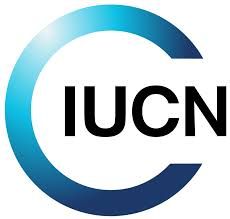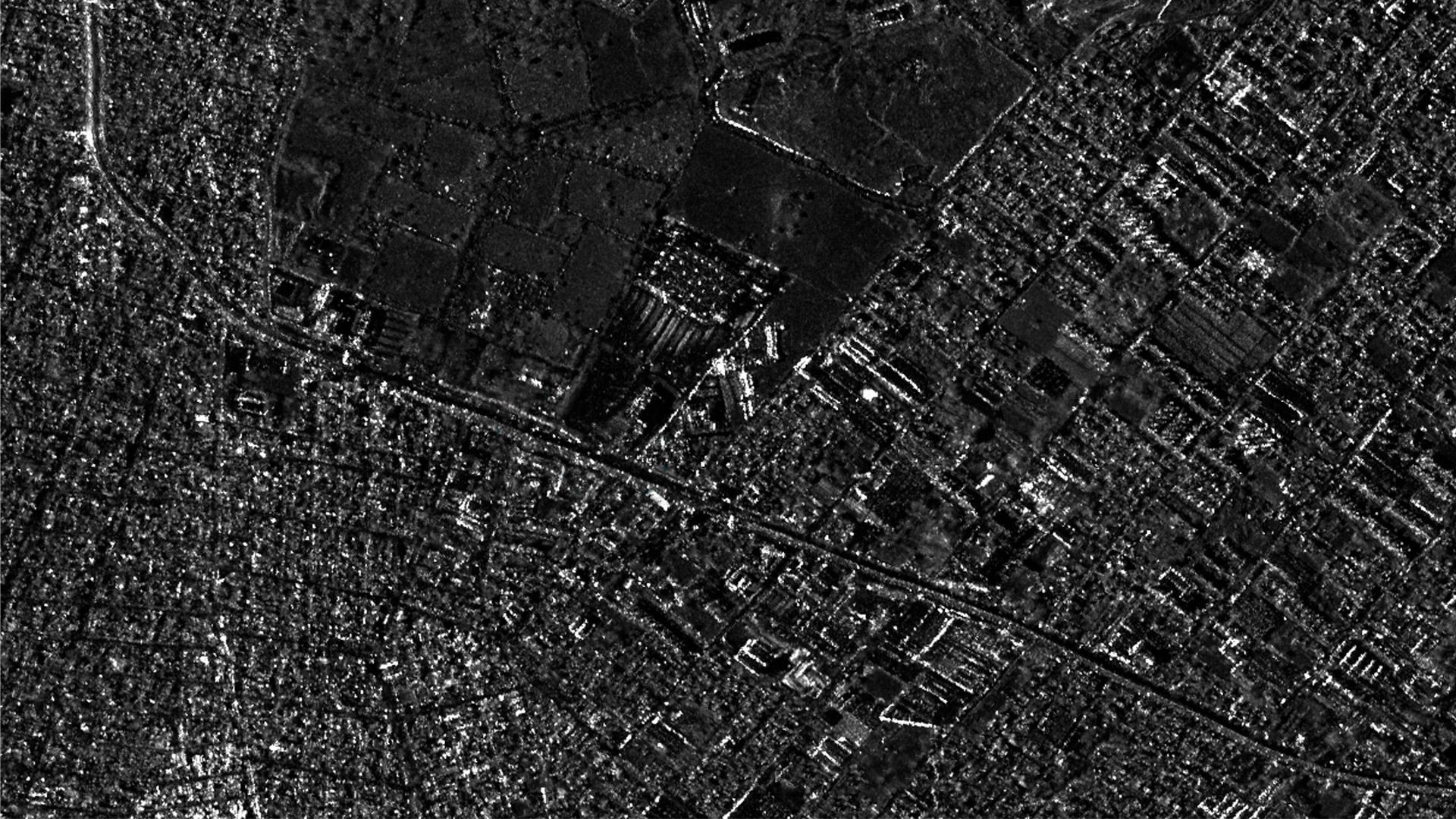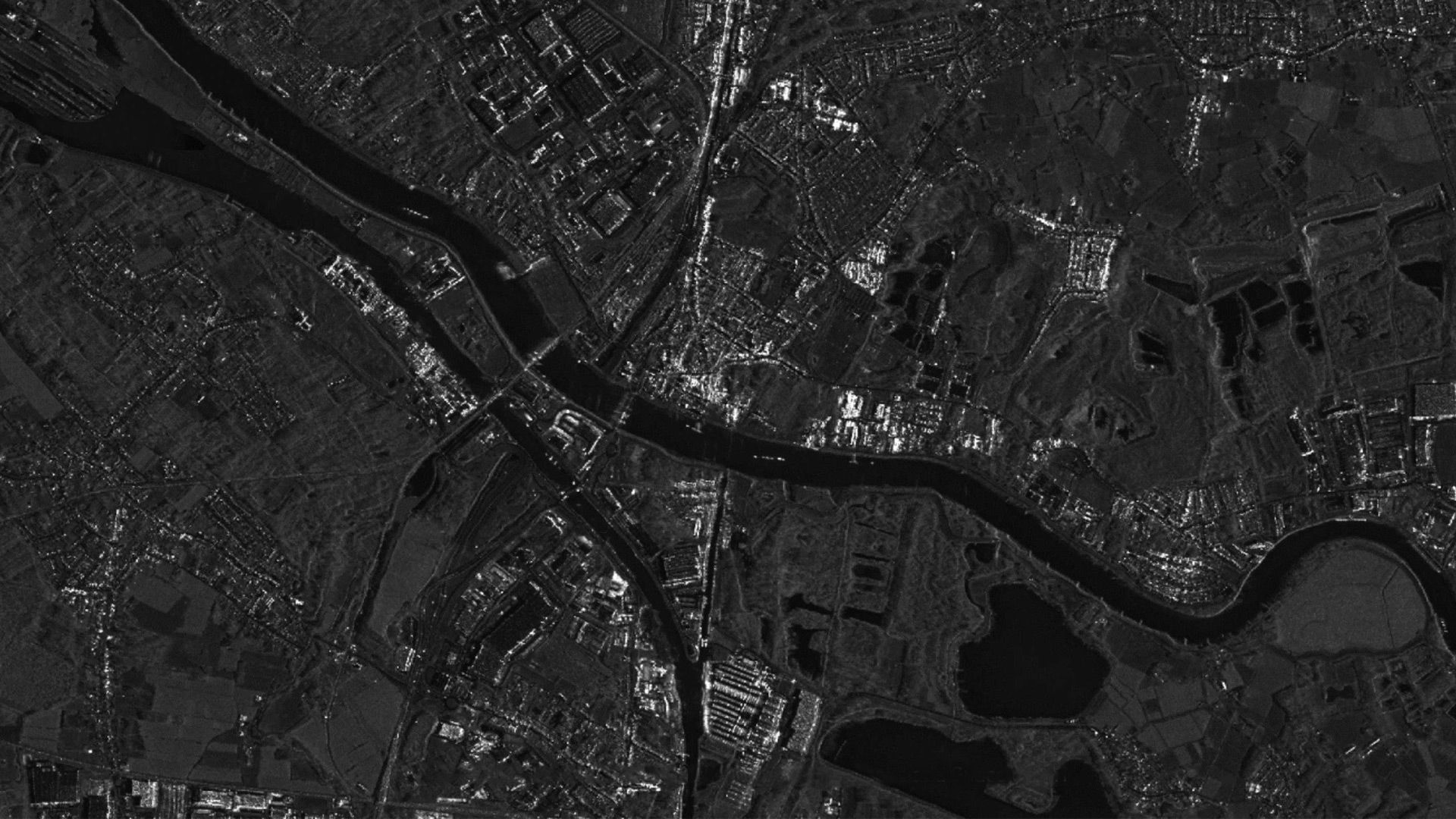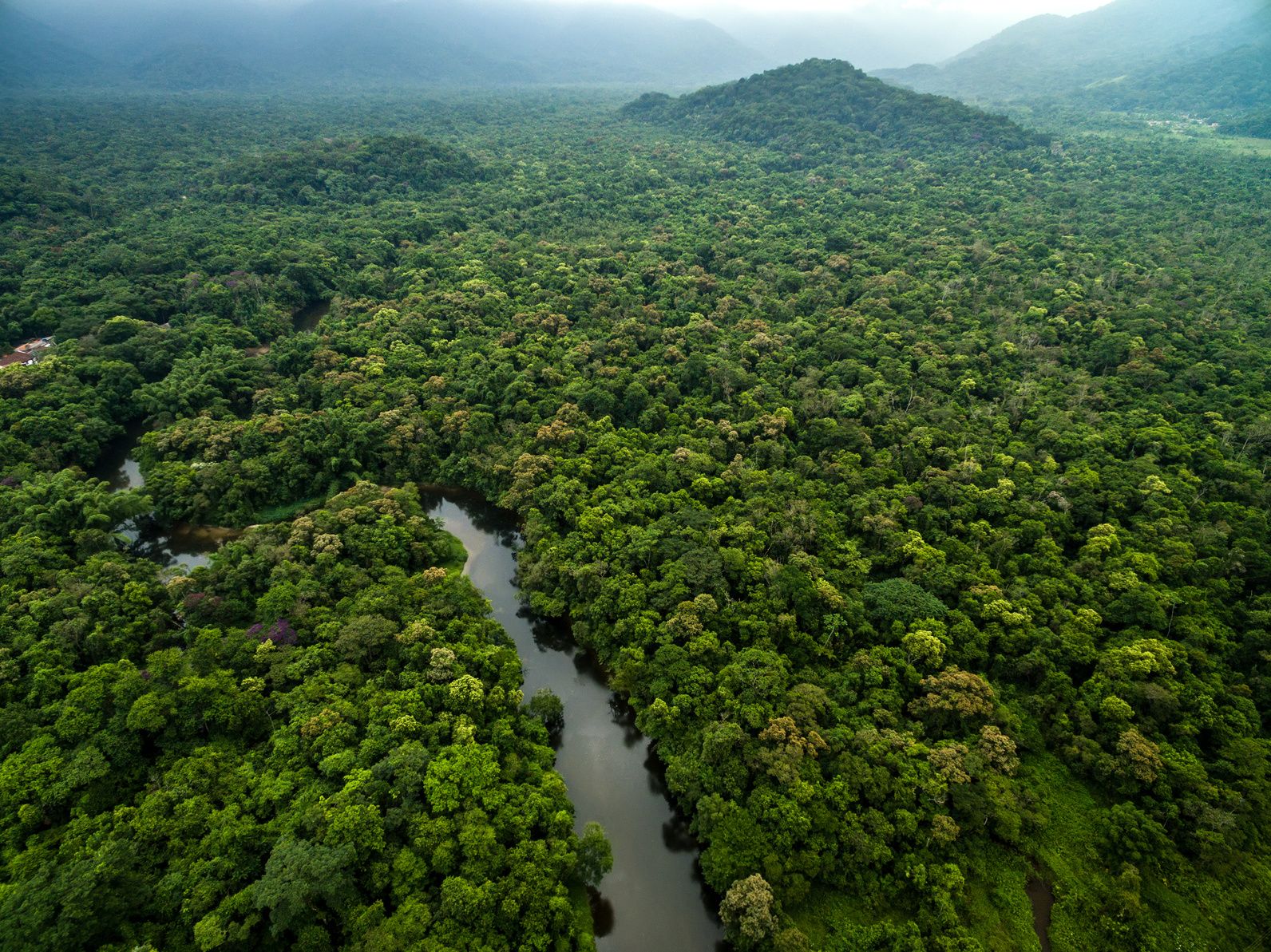
Home
Newsroom
Case Studies
Forestry Environment
Monitoring forest restoration ...
Monitoring forest restoration activities using satellite images
Thanks to satellite imagery donated by the Airbus Foundation, IUCN is monitoring both anthropogenic and natural restoration in Sao Paulo state (Brazil)
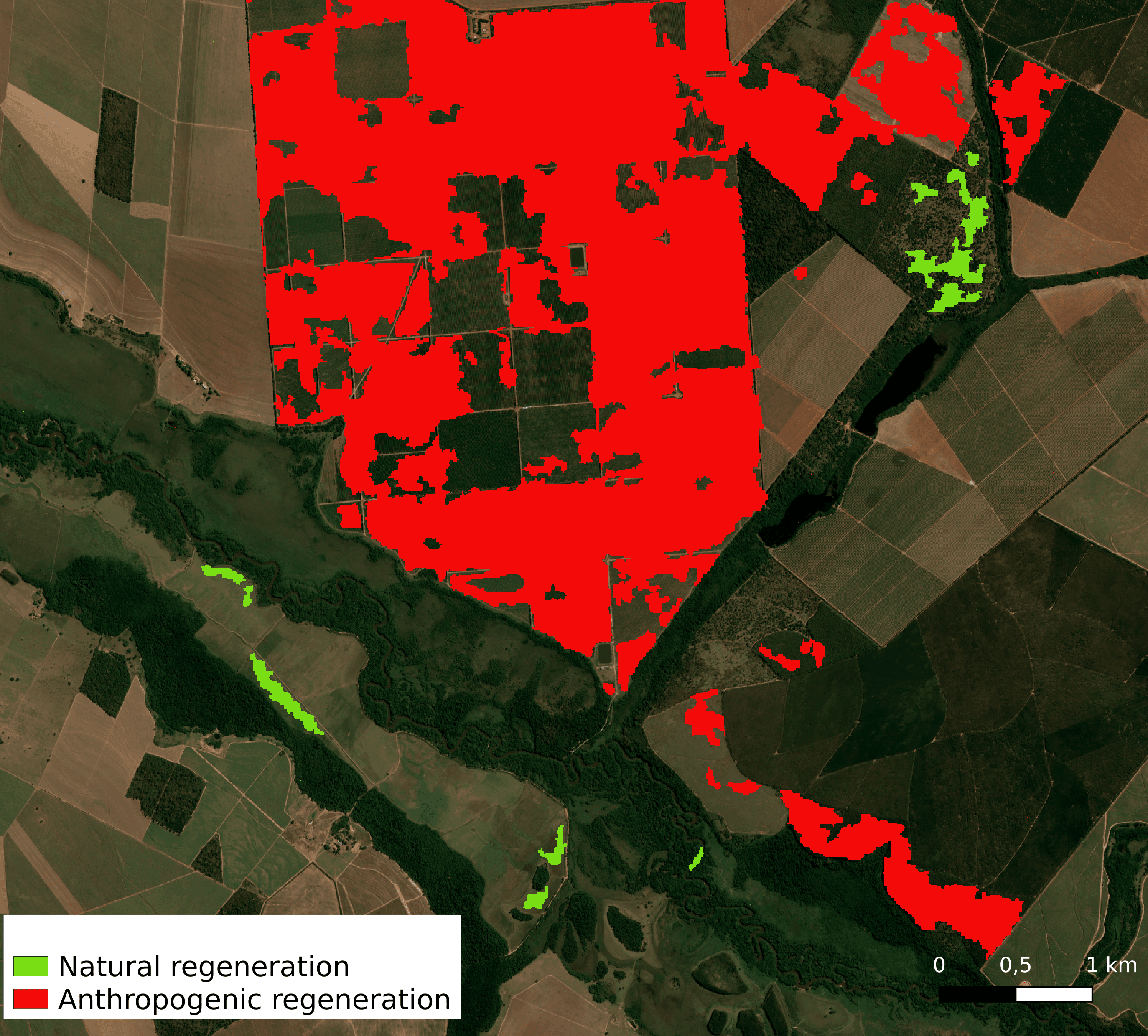
Example of restoration map produced during the project
Due to a range of factors including development activities, agricultural expansion, logging, and natural events like forest fires, many forested landscapes are being partially or wholly degraded. In response, programs to restore forest are emerging in several countries, recognizing the importance of restoring forest ecosystems to maintaining ecological balance, since forests play a key role in regulating the climate, purifying air and water, as well as preserving biodiversity.
IUCN (International Union for Conservation of Nature) offers a range of solutions to support forest landscape restoration and conservation efforts. These include the ROAM (Restoration Opportunities Assessment Methodology) tool for forest landscape restoration planning, IUCN Contributions for Nature (a member-focused platform for documenting conservation and restoration projects) and the Restoration Barometer, a global framework that tracks restoration commitments at the country level. These tools and platforms are valuable for assessing the potential impacts of biodiversity conservation, climate change mitigation, and socio-economic benefits. In addition, IUCN planned to enhance the accuracy and monitoring capacity of restoration documentation.
In 2022, IUCN wanted to explore the use of satellite imagery to independently and consistently validate reported restoration activities and monitor them more accurately.
Thanks to Airbus Foundation support, a 3-year project was proposed to help IUCN monitor forests impacted by human activity or disasters in the region of Sao Paulo, Brazil. The goal of this project was threefold: assess where tree canopy has changed over a temporal range, characterize tree canopy changes and assess restoration activity has reached a sufficient canopy coverage. The different stages of the proposed solution were as follows:
- Satellite data and ground truth collection: around 10,000 satellite images from June 2015 to June 2022 with less than 90% cloud cover was collected from Sentinel-2 and Landsat satellites. A ground truth reference dataset wre established using photo-interpretation, making it possible to classify different types of land use over more than 35,000 ha, representative of the landscape.
- Annual land cover maps generation: thanks to artificial intelligence, our model accurately classifies the whole Sao Paulo state into different land use classes (tropical forest, forest plantation, shrubland, low vegetation, water, artificial, etc.).
- Restoration map production: based on the annual land cover maps, we produce a restoration map aiming to detect restoration occurring during a given period.
- Evidence-based tool: to further enhance our monitoring capabilities and provide more granular insights, we leverage very high-resolution (VHR) satellite imagery from Airbus' constellation. This additional data layer allows us to conduct more detailed analyses, particularly in cases where discrepancies arise between reported reforestation efforts and our satellite-derived maps, enabling us to identify potential anomalies.
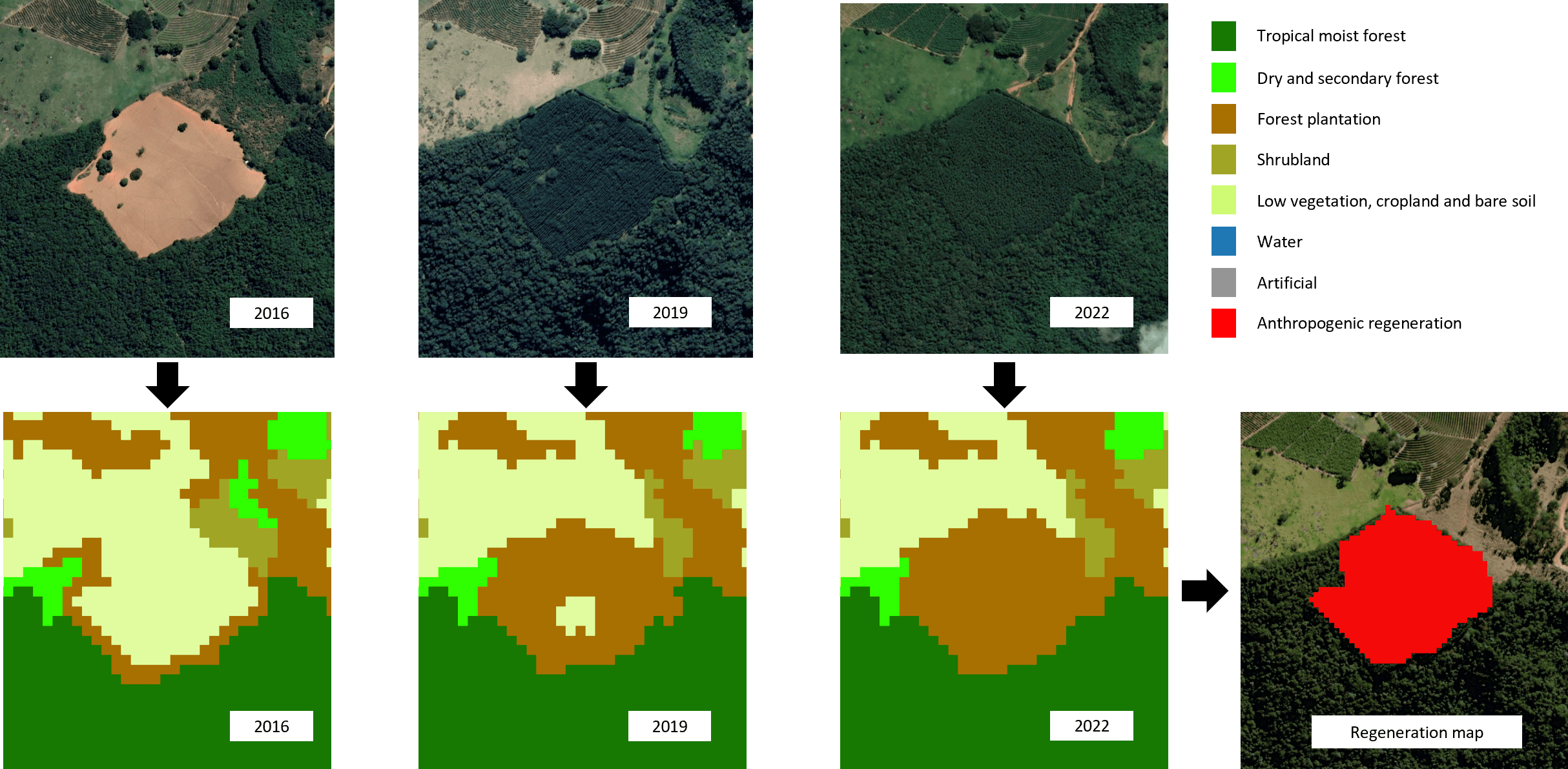
Example of anthropogenic regeneration process
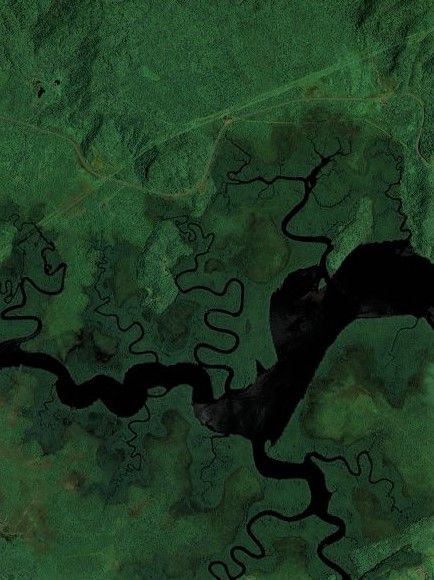
- Global-scale potential: Our solution is designed with scalability in mind. It has the potential to expand to global scale monitoring, providing a consistent and standardized approach.
- Natural vs. anthropogenic restoration: Our analysis can differentiate between natural and human-induced forest restoration, providing valuable insights into the effectiveness of reforestation efforts.
- Independent verification: By using an independent and remote sensing-based approach, the IUCN can verify the success of reforestation projects without relying solely on ground-based methods, which can be time-consuming and costly.
- Historical analysis: Our method allows for retrospective analysis of forest cover changes, enabling the IUCN to track long-term trends and assess the impact of past and present reforestation efforts.
- Scalability: While currently applied in Sao Paulo State, our solution is scalable and can be applied to any region in the world, making it a versatile tool for monitoring forest restoration on a global scale.
- Data-driven decision making: The detailed and timely data provided by our solution enables the IUCN to make informed decisions about future reforestation projects and conservation strategies.
- Enhanced transparency: By providing a clear and transparent assessment of forest restoration, our solution can help build trust among stakeholders and promote accountability.
Our collaboration aims to bridge the critical gap in monitoring and reporting restoration projects, especially for countries that lack the technical capacity and resources to do so. By developing a consistent and scalable methodology, we’re enabling IUCN stakeholders and a broader global community to accurately track restoration progress. This initiative is vital for ensuring transparency, accountability, and ultimately, the success of global restoration efforts.
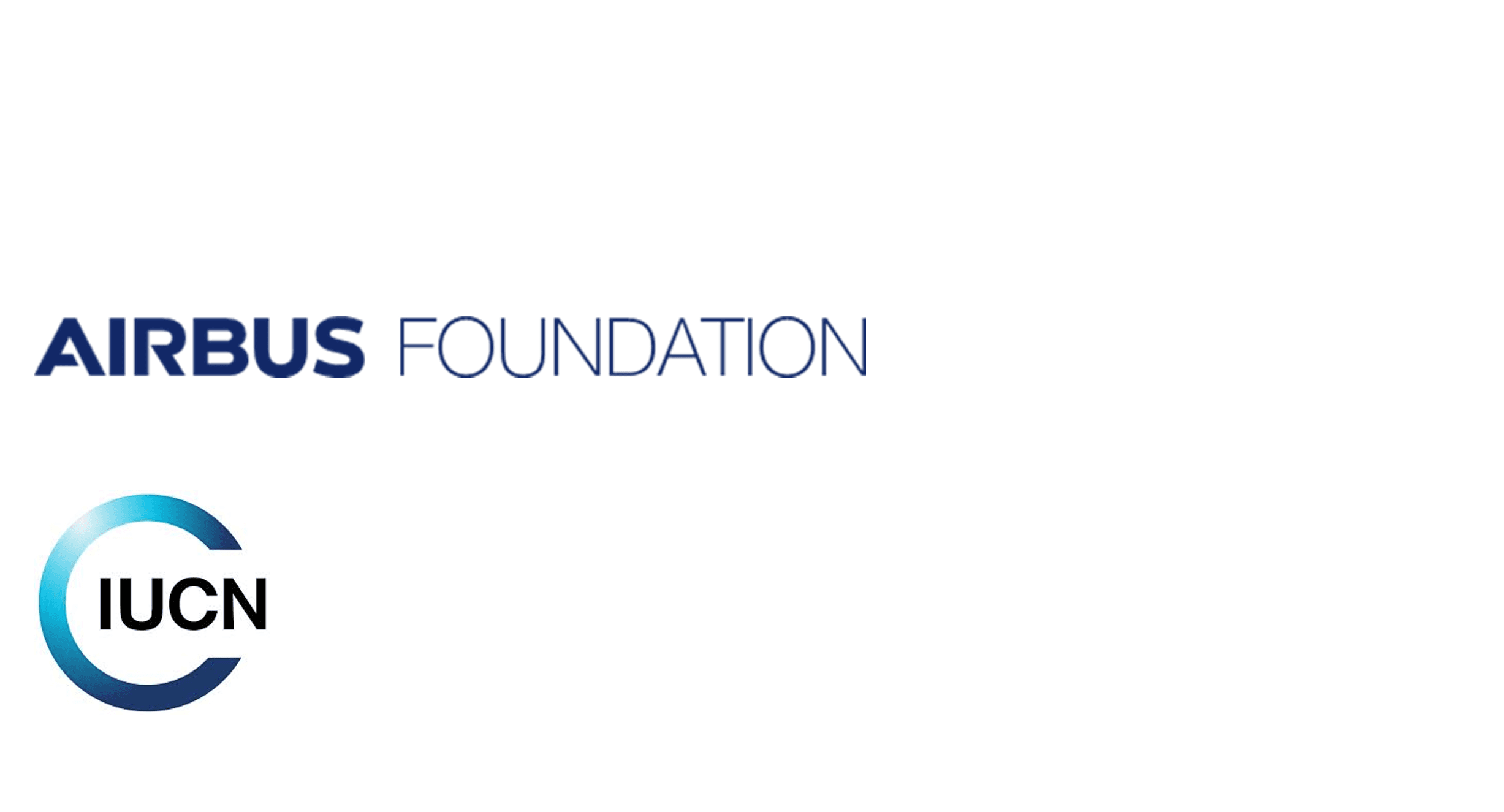
The Airbus Foundation provides access to Airbus’ unique portfolio of high-tech products, services and know-how to help address some of the world’s most pressing problems, developing impactful partnerships with NGOs and associations around the world to deliver its missions.
The International Union for Conservation of Nature is an international organization working in the field of nature conservation and sustainable use of natural resources. Founded in 1948, IUCN has become the global authority on the status of the natural world and the measures needed to safeguard it.
Want to learn more about the project ?

